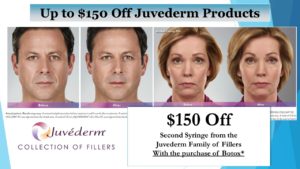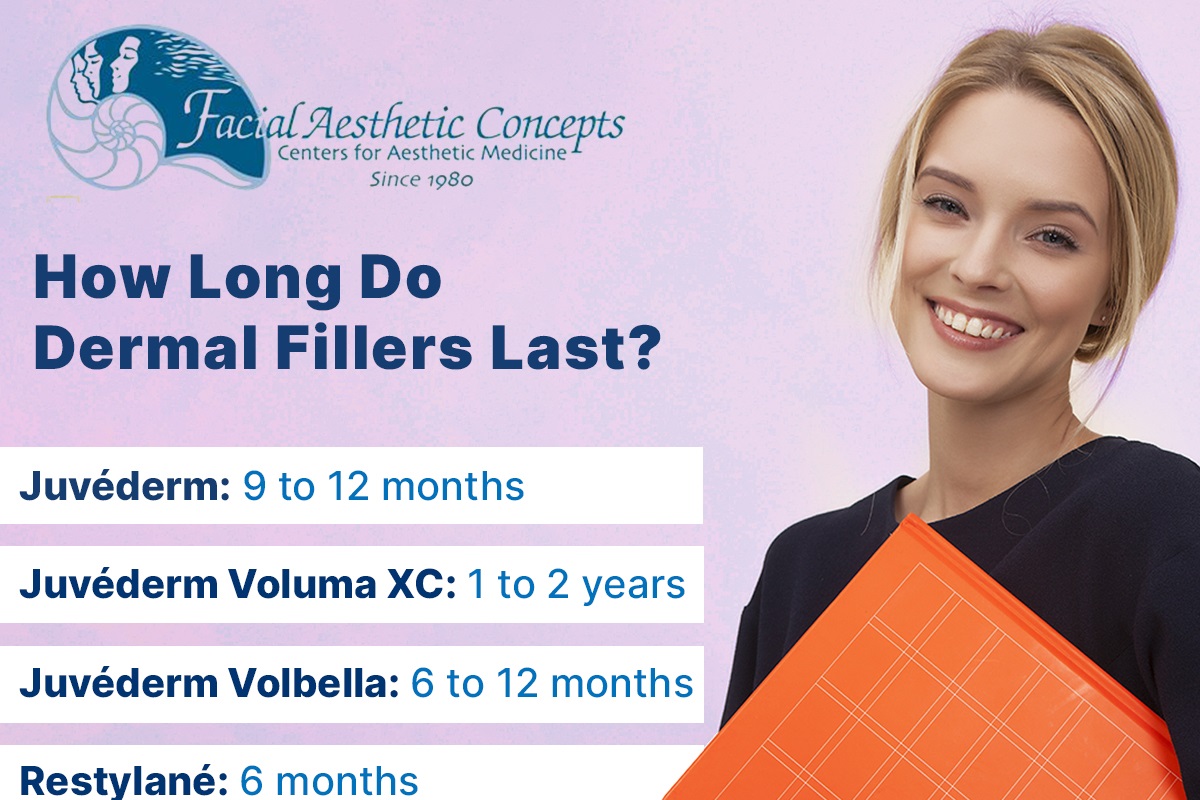



5 Things to Know About Fillers
Injections like Botox and fillers are touted as an effective “quick-fix” with some impressive results achievable if done right.
But there are some important things you should know when you are considering filler treatment.
There’s a lot to consider before diving-in for wrinkle reduction or “Brotox” (yes, it’s a thing), so we’re going to explore the pointy-end so you can make an informed decision…
How Long Do Dermal Fillers Last? Up To 3 Years, But…
It all depends on the type of dermal filler you choose.
According to recent statistics ( https://www.aad.org/public/diseases/cosmetic-treatments/fillers#faqs ) , this is how long the most common types of fillers last:
– Juvederm – up to 12 months
– Voluma – up to 24 months
– Restylane – up to 9 months
– Radiesse – up to 24 months
– Fat Transfer – 1-3 years with some permanence
With so many options, how do you choose?
The good news is that you don’t have to. The appropriate choice of filler depends, to a large degree, upon your anatomy and the area being treated.
For example, when we want to restore volume lost in the aging process we often use either Voluma or fat transfer to restore facial contours with outstanding control due to the thickness of the product and its placement within the skin.
If we are looking to enhance the lips we often choose a softer, more delicate product like Volbella.
The family of Allergan fillers now offers Vycross technology which cross links hyaluronic acid molecules to dramatically improve the longevity of the product. Results can now last up to two years.
Although each patient is unique, certain types of fillers are generally used in specific areas:
Juvederm – folds and creases around the mouth
Voluma – midface contour restoration
Volbella – superficial lines and wrinkles or delicate areas
What is the best filler?
There are a myriad of options available in the market today so it is easy to be confused about which product is really the best. At Facial Aesthetic Concepts we only use the Juvederm family of fillers, manufactured by Allergan, and the Restylane family of fillers, manufactured by Merz Aesthetics. We have found that they offer the best mix of safety, patient satisfaction, and longevity.
What should I avoid?
Longevity is one of the cornerstones of what patients want. They don’t want to have to continue getting injections in order to maintain their youthful contours. This has led to the development of some ‘permanent’ and ‘semi-permanent’ fillers. We at FAC are opposed to using any permanent fillers.
The body is constantly changing and despite our use of products to reverse the signs of aging Father Time marches on. When permanent products are used they do not allow for adjustment that may be necessary as aging continues to change the anatomy and facial structure.
How much filler do I need? Will I look ‘weird’?
Each patient is different in what they need. It is important to have a comprehensive assessment with the medical provider that will be performing your treatment, not a sales consultant.
At FAC, our assessments include a review of photographs of you in younger years to compare your facial contours and identify the changes that have occurred in the aging process.
One of the most common concerns with filler treatment, particularly multiple syringes is if it will look natural or ‘overdone’. Experienced providers will use 2-5 syringes on patients and achieve a very natural and more youthful look. That may seem like a lot to inject but keep in mind that each 1cc syringe is approximately 1/5 of one teaspoon of liquid. That amount is very small so the best possible outcome will usually require more than one syringe. When performed well this results in a natural, rested appearance that restores years without anyone knowing.
Remember: Everyone will notice, but no one will know.
unscreen is important in preventing & protecting against the harmful ultraviolet rays, UVB & UVA. UVB rays penetrate shallowly into the skin contributing to sunburns. UVA rays penetrate more deeply and will cause premature aging, and both UVA & UVB ray contribute to causing skin cancer. Sunscreens that protect against both UVA & UVB are called Broad Spectrum sunscreens. Fun Fact, SPF stands for Sun Protection Factor & lets you know how much UVB protection a product provides against sunburn.
There are two categories of sunscreens on the market: Physical & Chemical. Physical (mineral based) sunscreens contain zinc oxide or titanium dioxide, and when applied to the skin they deflect, or block, harmful UV rays. Chemical sunscreens contain organic (carbon based) compounds like oxybenzone, octinoxate, octisalate & avobenzone. They work by changing UV rays into heat, then releasing that heat from the skin, essentially filtering out specific UV rays. Now it is important to note that’s all of these ingredients are approved by the FDA and are deemed safe for use.
How can you tell if you are using a banned or environmentally friendly sunscreen? Look at the back of your sunscreen bottle at the active ingredients listing; if the listing contains oxybenzone and octinoxate then it is not environmentally friendly & should left at home on your next trip to the beach. Don’t worry; there is an array of environmentally friendly sunblocks available out there in a variety of shades, SPF and finishes, and we offer many at Facial Aesthetic Concepts.
Remember, sunscreen is important! It keeps you healthy & looking young!!

![Fillers Can Do More Than You Think [Infographic]](https://www.facorangecounty.com/wp-content/uploads/2020/10/FAC-Infographic-Sep20-v1A.jpg)